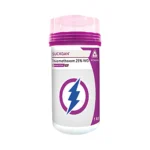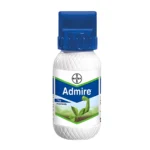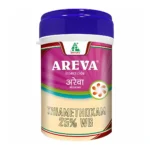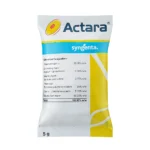Acid Lime Pests
Scale Insect
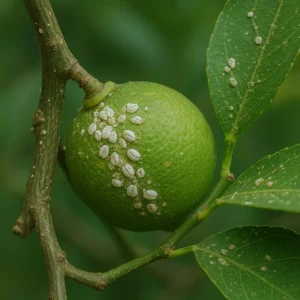
Symptoms
Direct Damage:
- Leaf Yellowing and Drop: Scale feeding removes sap from leaves, leading to chlorosis (yellowing), reduced photosynthesis, and premature leaf drop.
- Branch Dieback: Severe infestations can cause twig and branch dieback due to the loss of sap and nutrients.
- Reduced Vigour and Growth: Prolonged feeding weakens the tree, leading to stunted growth and reduced fruit production.
Indirect Damage:
- Honeydew and Sooty Mold (Soft Scales): The honeydew excreted by soft scales can cover leaves, stems, and fruit, promoting the growth of sooty mold. This black fungus reduces the tree’s ability to photosynthesize and diminishes fruit quality.
- Attraction of Ants: Ants are often attracted to the honeydew, which can lead to increased ant activity around the trees, protecting scales from their natural enemies.
Fruit Damage:
- Deformed and Discolored Fruit: Feeding on developing fruit can cause deformities, discoloration, and reduce fruit quality and marketability.
Identification
Types of Scale Insects:
- Armored Scales (e.g., California red scaleAonidiella aurantii):
- Appearance: Armored scales are small (about 1-3 mm), flat, and have a hard, shell-like covering. They vary in color from brown to gray or red, depending on the species.
- Behavior: These scales do not produce honeydew, and their hard covering makes them more resistant to natural enemies and insecticides.
- Soft Scales (e.g., Cottony cushion scaleIcerya purchasi, Black scaleSaissetia oleae):
- Appearance: Soft scales are slightly larger (about 3-6 mm), with a smooth, waxy covering that can be dome-shaped. Colors range from brown to black, often with a mottled appearance.
- Behavior: Soft scales produce honeydew, a sticky substance that can lead to the growth of sooty mold on leaves and fruit.
- Armored Scales (e.g., California red scaleAonidiella aurantii):
Nymphs (Crawlers):
- Appearance: The first instar nymphs, known as crawlers, are tiny, mobile, and usually yellow or orange. They are the most vulnerable stage and are often targeted in pest control efforts.
- Behavior: Crawlers move to suitable feeding sites on leaves, stems, or fruit before settling down, inserting their mouthparts, and beginning to feed.
Management
- Systemic Insecticides: Systemic insecticides such as Imidacloprid or Thiamethoxam can be applied as soil drenches or foliar sprays to control scale insects. They are absorbed by the plant and kill scales feeding on plant sap. Systemic treatments are often more effective against armored scales, which are protected by their hard coverings.
- Insect Growth Regulators (IGRs): Products such as Pyriproxyfen disrupt the development of immature scales and prevent them from reaching adulthood. IGRs are most effective when applied during the crawler stage.
|
Insecticide |
Dosage |
|---|---|
|
1 gm/lit |
|
|
0.3 gm/lit |
₹250
Select options
This product has multiple variants. The options may be chosen on the product page
₹225
Select options
This product has multiple variants. The options may be chosen on the product page
₹249
Select options
This product has multiple variants. The options may be chosen on the product page
